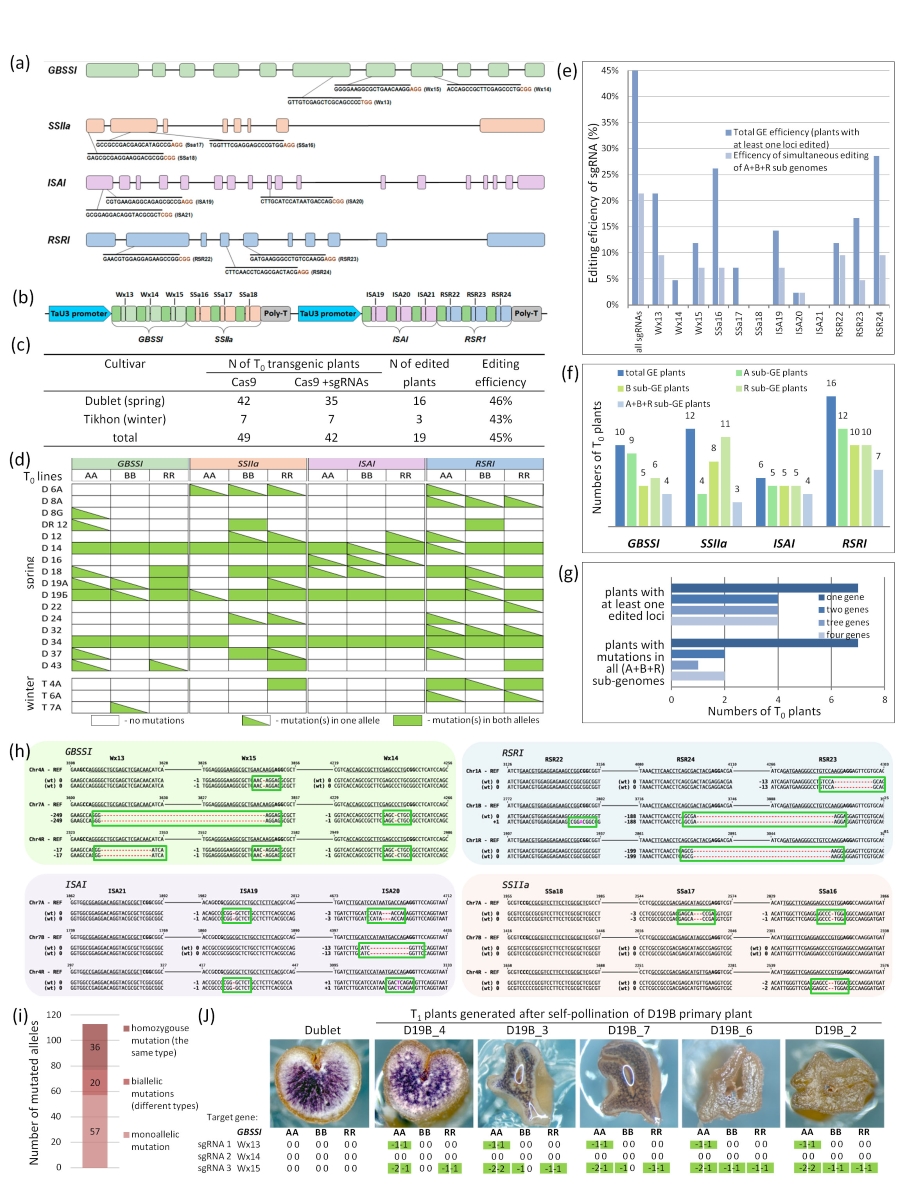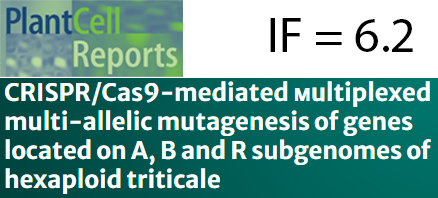Press-room / news / Science news /
CRISPR/Cas9-mediated мultiplexed multi-allelic mutagenesis of genes located on A, B and R subgenomes of hexaploid triticale
This research, performed by the members of the Laboratory of Expression Systems and Plant Genome Modification (BIOTRON), Department of Plant Molecular Biology and Biotechnology, together with colleagues from the All-Russia Research Institute of Agricultural Biotechnology, reports the first time production of edited hexaploid triticale (× Triticosecale) through CRISPR/Cas9-mediated multiplexed induction of multilocular mutations in genes associated with starch biosynthesis.
The presence of several sets of chromosomes in polyploid crops is a serious problem for the application of gene and genome editing systems. Efficient CRISPR/Cas9-based mutagenesis of series of genes involved in the grain starch biosynthesis of hexaploid triticale has been developed. Triticale (× Triticosecale), is a hybrid of rye (Secale) and wheat (Triticum) and consists of three subgenomes (AA, BB and RR). Four genes (GBSSI, SSIIa, ISAI and RSR1) were targeted. To ensure efficient editing of all subgenomes, a trio of guide RNAs for each target genes were designed (Figure 1a). To enable simultaneous editing of 36 genetic loci at once (three sgRNAs × four genes × three subgenomes), an expression cassette was constructed as an array of twelve sgRNAs and delivered into regenerable cells by gene gun (Figure 1b).
Genotyping of primary plants conducted NGS and HRFA showed that the generated plants exhibited indels in at least one genetic locus, achieving a gene editing rate of 43-46% in two commercial cultivars (Figure 1c,d). The editing efficiency of twelve sgRNA was not equal. Two genetic loci showed no editing; while the mutagenesis of the others ranged from 2 to 27% (Figure 1e). No clear differences in editing efficiency between the A, B and R subgenome loci of triticale were observe (Figure 1f). The majority of mutations induced in the genome of edited triticale plants were minor deletions. Notably, large deletions (up to 283 nucleotides) were also detected between adjacent target sites (Figure 1h), indicating the ability of the wheat-optimized Cas9 nuclease to cut chromosomal fragments in subgenomes segments derived from both wheat and rye. A maximum of 41 indel sites (21 edited loci in three subgenomes) were observed in D34 plant due to the activity of ten sgRNAs (Figure 1h).
Homozygous T1 sublines harbouring all six modified alleles were identified for each of target genes (Figure 1g), and their seeds were evaluated through iodine staining to observe the effect on starch accumulation. Grains from the 19B primary event, carriyng mono- and bi-allelic mutations within the three subgenome copies of GBSS, showed a loss-of-function phenotype (Figure 1). Conversely, no phenotype alterations were observed in the seeds of SSIIa, ISAI and RSR1 mutants. It can be expected that the described approach will make an important contribution to the future breeding of polyploid crops to produce various combinations of new genetic alleles encoding desired traits.
The results are published in Plant Cell Reports.

РИСУНОК 1. CRISPR/Cas9-индуцированный мутагенез у гексаплоидного тритикале.
february 12


